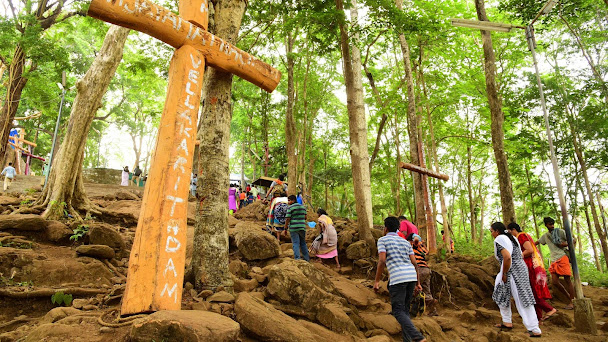Odathil Palli: The legacy of Keyi's
In the middle of the Thalassery town stands a mosque which in many ways showcases the history of this town which flourished due to the presence of enterprising individuals who influenced the culture of this heritage place. The Odathil Palli has been present along the landscape of Thalassery for over 200 years and the story of its existence is based on the family who commissioned its construction – The Keyi’s. The mosque has many unique features in terms of its architecture but the story of the most aristocratic family of Thalassery is what people today should know.
The name of the mosque comes from the word Odam which means garden & this place was a sugarcane garden during the time of the Dutch who gave this land as a gift to Moosakakka of the Keyi family in reward for his truthfulness & honesty. The British had taken over all land & they officially gave permission for the transfer. It is important to understand the story of this grant and why Keyi’s were favoured among all others. The Keyi’s came to the shores of Malabar in the 17th century & became prosperous due to their shrewd acumen for trade. It is important to know that the word Keyi in Urdu means owners & the family that came to Kerala from Gujarat where wealthy ship owners. The earlier members of the family were not called Keyi’s as this title was given to the head of the family only in the 19th century, before that the karanavar or head of the family was given the title Kaakka. The person who built the family was called Aluppikaakka who was quite benevolent & his actions made him an influential person in Thalassery. The Keyi’s traded in many different items from spices to timber to metals & their influence over the businesses in and around Thalassery can be found from the fact that many of the buildings, shops & market rooms even today are still under the control of the Keyi family.
The name of the Keyi’s became known to people around Kerala after the arrival of Moosakaakka who was the nephew of Aluppikaakka & he changed the dynamics of trade by venturing into many other fields along with widening their reach to Kochi & Travancore. The need to widen the trade was not intentional but the need of the time. The Keyi’s were devout Muslims but they also believed in the principle of free trade and when Tipu Sultan attacked Malabar they resisted the invasion. They had to withdraw the resistance when the Chirakkal Raja & Arrakkal family accepted the treaty with Mysore which made the Keyi’s move south & take refuge with the Travancore Kings. The Travancore kings were happy to provide asylum to the Keyi’s as their principle of truthfulness in trade was well known. The Keyi’s in Travancore further flourished & their wealth increased many folds as they ventured into new trade. The death of Tipu Sultan ended the Mysore rule in Malabar & the British invited the Keyi’s back to Thalassery to restart their trade which they did & built large pandikasalas to store goods along the port. The British East India Company as the Dutch, recognised the honesty & truthfulness of the Keyi’s & offered the Karimbin-odam or sugarcane garden of the Dutch as a gift to Moosakaakka. It is said that Moosakaakka also fondly called Chovvakaaran Moosa could not accept the land as a gift & is said to have paid a small amount to the British, this story just impresses on the principles of the Keyi’s who believed in acquiring wealth only in rightful manner. The land was used by Moosakaakka to build this beautiful mosque.
The mosque was constructed in 1806 & it is important to note that the structure was built in the traditional architectural design of a temple. The interior of the mosque is designed as per Islamic traditions with a large prayer hall held up by a complex arrangement of pillars. The mimbrah & the Oudh or aquaduct is as old as the mosque & the doors around the lower floor allow natural light to enter the hall. The prayer hall ceilings are made with timber & have intricate designs for one to see. It is to note that the use of timber is quite elaborate in the mosque as the doors, pillars, stairs, framings & roof beams are all made with wood brought from Kozhikode. The outer roof panels are a sight indeed as it is covered with copper plates rather than the usual terracotta tiles which shows the opulence of the Keyi’s. The most striking sight from the outside is the minor on top which has a conductor made in gold and it became a point of opposition among the hindus of the area who did not approve the use of the golden conductor as it was only seen atop temples. The Keyi’s approached the Zamorin to intervene & it is said that the Raja had to grant the approval to bring harmony among the two communities. These conductors along the roof of the mosque still shine with all its grace and complete the Odathil Palli. Inside the mosque one can find the tomb of Moosakaakka and only members related to the Keyi family are cremated at the mosque.
The Odathil Palli even today is a place for people to pray in peace & for visitors it's a symbol to know & understand the Keyi family who in many ways influenced the culture of THalassery with their way of life.




Comments
Post a Comment